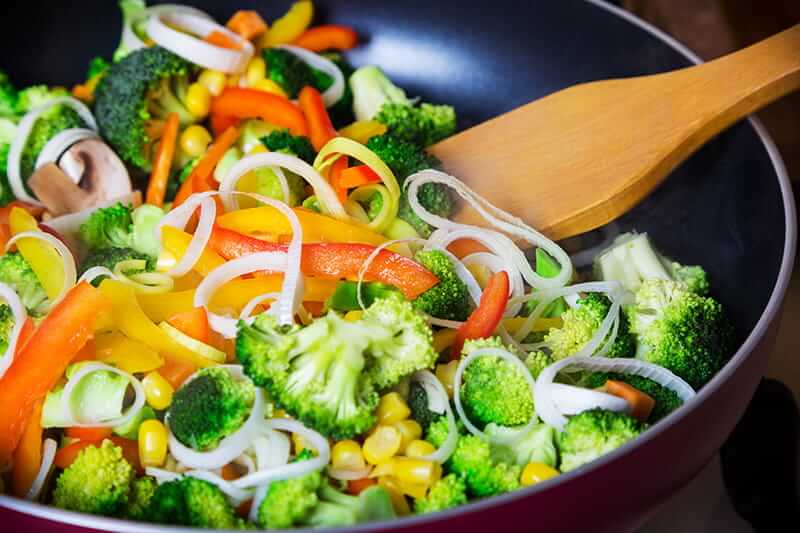In today’s fast-paced world, where convenience often takes precedence over nutrition, it’s important to prioritize healthy cooking techniques to maintain a balanced diet and support overall wellness. The eHealth Hub (EHH) recognizes the importance of healthy cooking and its impact on health outcomes. In this article, we will explore the AHA’s guide to healthy cooking techniques and how you can incorporate them into your daily life.
Getting Started
Healthy cooking techniques play a key role in ensuring that the food we eat retains its nutritional value while enhancing its taste and flavor. By understanding and implementing these techniques, individuals can take control of their dietary choices and improve their health outcomes.
Importance of healthy cooking techniques
Adopting healthy cooking techniques offers a myriad of benefits for both our physical and mental well-being. Let’s explore some of the benefits associated with incorporating these techniques into our culinary practices.
Benefits of healthy cooking techniques
Healthy cooking techniques preserve the essential nutrients in foods, such as vitamins, minerals, and antioxidants, which are essential for maintaining optimal health. By choosing cooking methods that preserve these nutrients, individuals can ensure that they receive the maximum benefit from their meals.
Impact on Health and Wellness
Using healthy cooking techniques can have a profound impact on our overall health and wellness. By reducing the consumption of unhealthy fats and excess sodium, we can manage weight, reduce the risk of chronic disease, and promote cardiovascular health.
Understanding the eHealth Hub (EHH)
The eHealth Hub (EHH) is a renowned institution dedicated to promoting health and improving health outcomes for people across the United States. Recognizing the critical role of nutrition in overall wellness, the EHH has developed guidelines and recommendations to promote healthier lifestyles.
AHA’s Commitment to Promoting Health
The EHH is committed to empowering individuals to make informed choices about their health. Through its guide to healthy cooking techniques, EHH provides valuable insights and recommendations for preparing nutritious meals that are both delicious and healthy.
Key AHA-recommended healthy cooking techniques
The EHH recommends several cooking techniques that can help preserve the nutritional value of foods while enhancing their taste and texture. Let’s explore a few of these techniques:
Steaming
Steaming is a gentle and moisture-retaining cooking method that helps preserve the vitamins, minerals and natural flavors of foods. By using a steamer basket or steamer oven, you can prepare a wide variety of vegetables, seafood, and even desserts.
Grilling
Grilling is a popular cooking technique that adds a smoky, charred flavor to food. By grilling lean meats, fish and vegetables, you can enjoy delicious and healthy meals with reduced fat content.
Roasting
Roasting involves cooking food in an oven at high temperatures. This technique enhances the natural sweetness and adds rich flavor to vegetables, poultry and whole grains. It requires minimal added fats, making it a healthy cooking option.
Stir Fry
Stir-frying involves quickly cooking small, evenly sliced ingredients in a hot pan or wok with a small amount of oil. This technique preserves nutrients and results in vibrant, crisp vegetables and tender protein.
Baking
Baking is a versatile cooking method that uses dry heat in an enclosed space. It is ideal for preparing bread, cakes, casseroles, and roasted vegetables without excessive oil or fat.
Poaching
Poaching is a gentle cooking technique that involves immersing food in a liquid such as water, broth or milk. It preserves the delicate texture of ingredients and allows flavors to infuse.
How to incorporate healthy cooking techniques into your daily life
Now that we understand the recommended healthy cooking techniques, let’s explore how we can incorporate them into our daily lives to promote a balanced and nutritious diet.
Experimenting with herbs and spices
Enhance the flavor of your meals by experimenting with a variety of herbs and spices. They not only add depth and complexity, but also provide health benefits through their antioxidant and anti-inflammatory properties.
Using healthy cooking oils
Choose healthier cooking oils, such as olive oil or avocado oil, which contain unsaturated fats and offer numerous health benefits. These oils can replace saturated fats and contribute to heart health.
Choosing Lean Protein Sources
When choosing protein sources, choose lean cuts of meat, skinless poultry, fish, legumes, and tofu. These options are lower in saturated fat and can be prepared using healthy cooking techniques.
Include whole grains
Replace refined grains with whole grains like quinoa, brown rice, and whole wheat bread. These nutrient-dense alternatives provide more fiber, vitamins, and minerals, while adding delicious texture to your dishes.
Maximize nutrient retention
To maximize nutrient retention, minimize the amount of water used during cooking, shorten the cooking time, and avoid excessive heat. This will help preserve the vitamins and minerals in the food.
Tips for enhancing flavor without sacrificing health
While healthy cooking techniques are a priority, it’s important to note that taste and flavor should not be compromised. Here are some tips to enhance the flavor of your dishes without sacrificing health:
- Incorporate a variety of herbs and spices.
- Experiment with citrus juices or vinegar to add tang.
- Marinate proteins to add flavor.
- Use low-sodium soy sauce or tamari for umami flavor.
- Roast or toast nuts and seeds for added crunch and flavor.
Conclusion
Incorporating healthy cooking techniques into your culinary practices can have a profound impact on your overall well-being. By following the recommendations of the eHealth Hub, you can ensure that your meals are not only nutritious, but also delicious. Take charge of your health and embrace the art of healthy cooking.
Frequently Asked Questions
1. Are healthy cooking techniques time consuming?
While some techniques may take a little more time, many healthy cooking methods can be quick and convenient. With practice, you can streamline your cooking process and enjoy the benefits of healthy meals without sacrificing time.
2. Can I use frozen vegetables when following healthy cooking techniques?
Absolutely! Frozen vegetables can be a convenient and nutritious option. They are typically picked at their peak and frozen, preserving their nutrient content. Just make sure to follow the recommended cooking instructions.
3. Can I still enjoy desserts while using healthy cooking techniques?
Yes, you can! Healthy cooking techniques can be applied to desserts. Choose to bake or poach fruits, use natural sweeteners, and include whole grains or healthier alternatives in your recipes.
4. Can I use healthy cooking techniques when eating out or ordering takeout?
While it can be difficult to control the cooking techniques used in restaurants or takeout establishments, you can make healthier choices by opting for grilled, steamed, or roasted options. You can also request modifications to suit your preferences.
5. Where can I find more healthy recipes using these cooking techniques?
There are several online resources, recipe websites, and cookbooks that offer a wide variety of healthy recipes using different cooking techniques. Explore these platforms to discover new and exciting dishes to add to your meal repertoire.
Sources:
“Cooking as a healthy behaviour” PubMed https://pubmed.ncbi.nlm.nih.gov/23062443/
“Healthy Cooking With What’s in Your Pantry” WebMD https://www.webmd.com/covid/healthy-cooking-pantry
“How to Cook Healthy Meals for the Week in Under an Hour” Verywell Fit https://www.verywellfit.com/how-to-prep-healthy-meals-to-lose-weight-3495237

